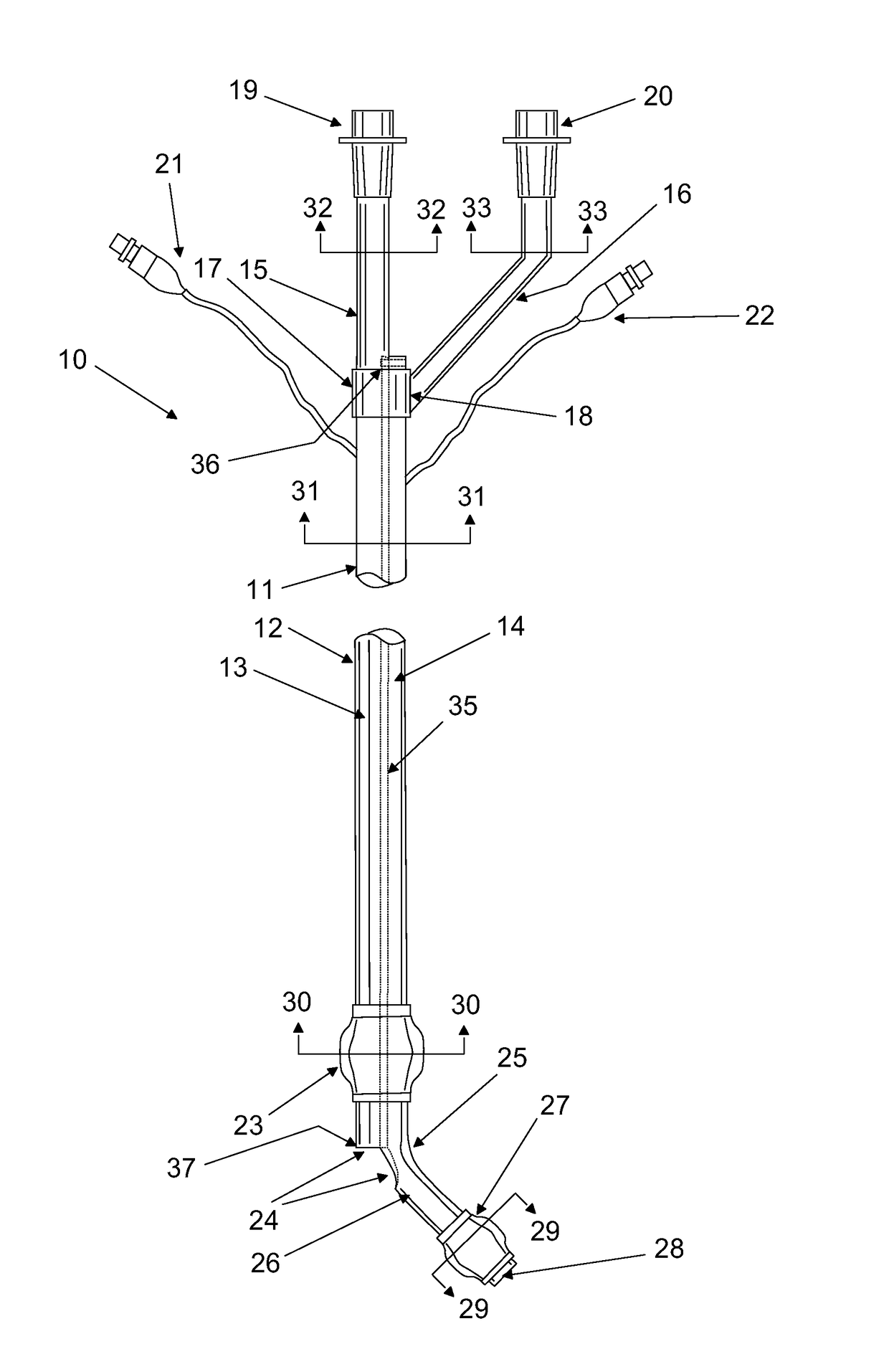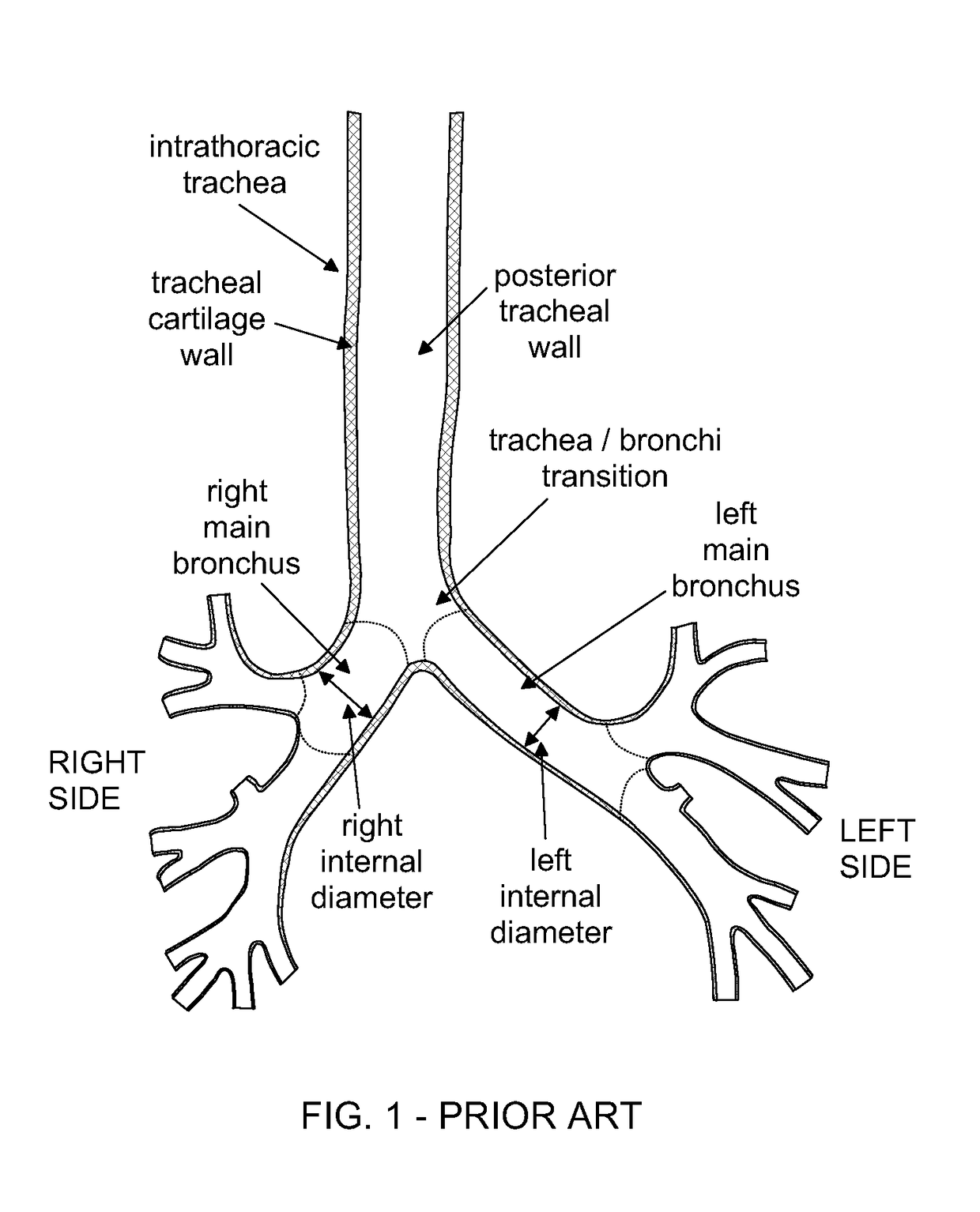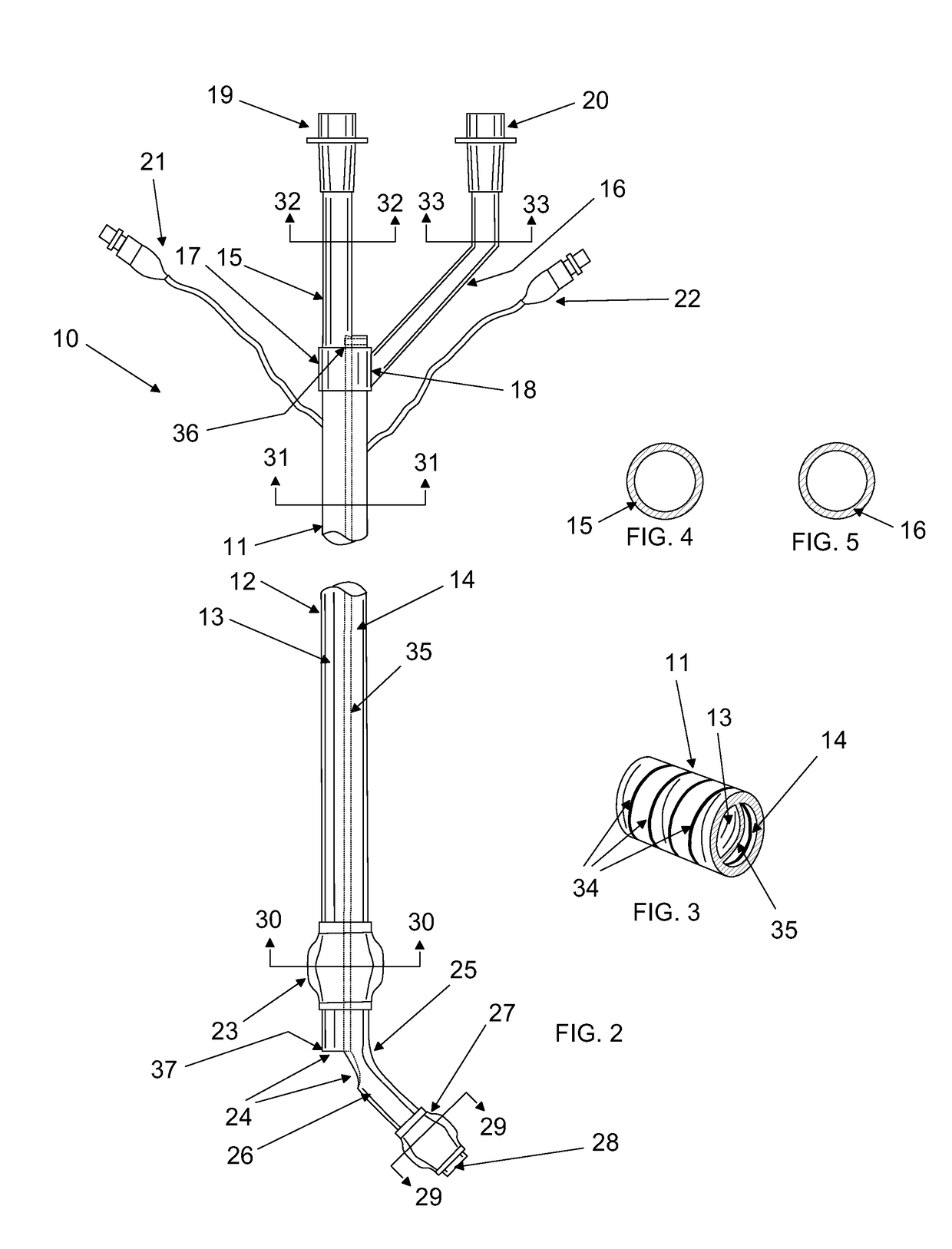Dual Lumen Endobronchial Tube Device
- Summary
- Abstract
- Description
- Claims
- Application Information
AI Technical Summary
Benefits of technology
Problems solved by technology
Method used
Image
Examples
Embodiment Construction
[0047]The invention is now discussed with reference to the figures.
[0048]FIG. 1 is a front, cross section view of a human lung, shown the tracheal and bronchial structures relevant to the present invention. Especially relevant are the relative locations of the main bronchi to the trachea.
[0049]FIG. 2 is a front view of one form of the invention dual lumen tube 10, having a proximal tube section 11 and a distal tube section, which are continuous and joined to each other but are shown with an indeterminate length break appropriate to an overall length of tube 10. For example an overall length of tube 10 for an adult will typically be about 40 centimeters. Overall length of tube 10 is reduced appropriately for pediatric and small adult sizes. It is critical to the objects of this invention that the outside diameter of sections 11 and 12 be less than or equal to approximately 13 millimeters for a large adult size and less than or equal to approximately 12 millimeters or less for a small...
PUM
 Login to View More
Login to View More Abstract
Description
Claims
Application Information
 Login to View More
Login to View More - R&D
- Intellectual Property
- Life Sciences
- Materials
- Tech Scout
- Unparalleled Data Quality
- Higher Quality Content
- 60% Fewer Hallucinations
Browse by: Latest US Patents, China's latest patents, Technical Efficacy Thesaurus, Application Domain, Technology Topic, Popular Technical Reports.
© 2025 PatSnap. All rights reserved.Legal|Privacy policy|Modern Slavery Act Transparency Statement|Sitemap|About US| Contact US: help@patsnap.com



